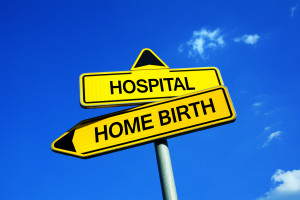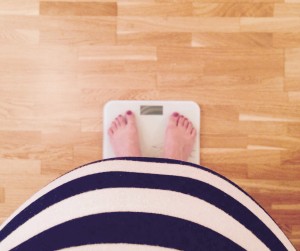 When you’re pregnant, everything you do and every choice you make impacts your unborn baby. That means that when you consume alcohol, your baby does too. Fetal alcohol syndrome can have a severe impact on your newborn and his or her ability to develop into a healthy infant. In the worst case scenario, the consequences could be fatal. Whether you drink only on occasion, daily, or know that you have a substance abuse addiction, all women who are pregnant or could become pregnant need to understand the causes and risks of this dangerous condition.
When you’re pregnant, everything you do and every choice you make impacts your unborn baby. That means that when you consume alcohol, your baby does too. Fetal alcohol syndrome can have a severe impact on your newborn and his or her ability to develop into a healthy infant. In the worst case scenario, the consequences could be fatal. Whether you drink only on occasion, daily, or know that you have a substance abuse addiction, all women who are pregnant or could become pregnant need to understand the causes and risks of this dangerous condition.
What is Fetal Alcohol Syndrome?
Fetal alcohol syndrome is a condition that impacts newborns that are exposed to alcohol during the mother’s pregnancy.
Causes of Fetal Alcohol Syndrome
Consuming alcohol while pregnant is the cause of fetal alcohol syndrome. When pregnant, alcohol enters the bloodstream and travels to the developing fetus via the placenta. For a fetus with a slower ability to metabolize alcohol, the exposure results in higher blood alcohol concentrations compared to an adult that can negatively impact the fetus’ delivery of oxygen and nutrition. It can also affect the healthy development of organs and tissues. While there is no defined quantity of alcohol that is considered the tipping point at which a baby will suffer the negative consequences of fetal alcohol syndrome, the more a pregnant mother drinks while pregnant, the higher the risk to her baby.
What are the Symptoms of Fetal Alcohol Syndrome?
Fetal alcohol syndrome can cause physical, emotional, and developmental issues and brain damage to a newborn. Issues may include:
- Distinctive facial features such as a small head, small eyes, a short, upturned nose, a thin upper lip, and a smooth area between the nose and upper lip.
- Deformities of the limbs, joints, and fingers.
- Slowed physical development before and after birth.
- An undersized brain.
- Visual or auditory impairments.
- Heart defects.
- Problems with kidneys.
- Poor social skills.
- Difficulty getting along with others.
- Trouble adapting to change.
- Difficulties staying on task.
- Problems with behavior and impulse control.
- Difficulty with time management.
- Cognitive and central nervous system issues such as:
- Poor balance and coordination.
- Poor memory.
- Intellectual disabilities such as learning disorders or delayed development.
- Poor attention span.
- Difficulty processing information, problem solving, and reasoning and judgment.
- Hyperactivity.
- Mood swings.
The severity of such physical and behavioral issues may vary significantly among children diagnosed with fetal alcohol syndrome, but none of these defects are reversible as the child ages.
There is no amount of alcohol that is considered safe to consume while pregnant. If you are pregnant or hoping to become pregnant and are struggling to eliminate alcohol consumption from your daily life, talk to your OBGYN. He or she can provide you with the support and resources needed to make positive lifestyle changes that will protect your baby and give him or her the best chance for a healthy life.
More
 No couple wants to hear the term “high-risk” associated with their pregnancy. An OBGYN may tell either first-time moms or couples expanding their families that their pregnancy is high-risk for a variety of reasons, but it doesn’t mean that without proper care and close collaboration with your OBGYN that you can’t deliver a full-term, healthy and beautiful baby. Whether you just found out you are pregnant, or you are hoping to become pregnant, it’s critical to understand the factors that may make a pregnancy high-risk.
No couple wants to hear the term “high-risk” associated with their pregnancy. An OBGYN may tell either first-time moms or couples expanding their families that their pregnancy is high-risk for a variety of reasons, but it doesn’t mean that without proper care and close collaboration with your OBGYN that you can’t deliver a full-term, healthy and beautiful baby. Whether you just found out you are pregnant, or you are hoping to become pregnant, it’s critical to understand the factors that may make a pregnancy high-risk.
The term “high-risk” may be used to describe any pregnancy in which there are potential complications that could impact either the mother, or the baby, or both. Factors that could result in a high-risk pregnancy include:
- Preexisting Conditions. If you are managing a chronic condition before you become pregnant, your OBGYN will want to monitor your pregnancy closely. Such conditions include high blood pressure; lung, kidney, or heart problems; diabetes; autoimmune disease; sexually transmitted diseases (STDs) or chronic infections such as human immunodeficiency virus (HIV).
- Maternal Age. Women under 17 or over 35 are at a higher risk of a complication, making any pregnancy high-risk. After age 40, women face a higher risk of miscarriage or giving birth to a child with genetic defects.
- Previous Pregnancy Complications. Women who have experienced complications with a previous pregnancy, or have had a miscarriage, are at a higher risk for future complications.
- Family History. If you have a family history of genetic disorders, your baby could be at higher risk of also being born with an inherited medical condition, such as Down syndrome, cystic fibrosis, or Huntington’s Disease.
- Medical Complications During Pregnancy. Your pregnancy may become high-risk if you develop a medical condition such as preeclampsia (a pregnancy complication characterized by high blood pressure) or gestational diabetes (a condition in which women develop high blood glucose levels during pregnancy).
- Fetal Development Problems. Babies that develop with a minor or major structural problem are considered high-risk. If there is a history of fetal development issues in your family, you may be at a higher risk of experiencing an issue with your baby.
- Multiple Births. The conception of twins, triplets, quadruplets, and more multiples has increased as more couples are utilizing infertility treatments to become pregnant. Carrying multiples increases the risk of premature labor, gestational diabetes, and pregnancy-induced high blood pressure.
- Premature Labor. Even after several months of a seemingly healthy pregnancy, premature labor can put you and your baby in a high-risk scenario. A premature labor is considered one that begins before 37 weeks of pregnancy. Women at a higher risk of premature labor include those with a shortened cervix or who have experienced previous preterm births.
- Placental Previa. A pregnancy condition in which the placenta covers the cervix and can cause bleeding, particularly during contractions. It may require a cesarean section to reduce bleeding risks to mother and baby.
A high-risk pregnancy doesn’t have to mean dire consequences. Whether you know going into your pregnancy that you will be at higher risk, or a pregnancy complication develops unexpectedly, the best thing you can do is work closely with your OBGYN and follow the treatment plan that he or she prescribes to keep both you and your baby safe throughout your pregnancy.
More
 Whether the baby you’re carrying is your first or your fifth, you may be considering planning for an at home birth, a trend that is rapidly growing across the nation. While the comforts and privacy of home may sound appealing, before you arrange to give birth at home, you should familiarize yourself with the benefits and risks involved with this delivery strategy and then heavily consider what is truly best—and safest—for you and your growing family.
Whether the baby you’re carrying is your first or your fifth, you may be considering planning for an at home birth, a trend that is rapidly growing across the nation. While the comforts and privacy of home may sound appealing, before you arrange to give birth at home, you should familiarize yourself with the benefits and risks involved with this delivery strategy and then heavily consider what is truly best—and safest—for you and your growing family.
What Happens During an At Home Birth
During a planned home birth, a midwife will supervise your delivery. You may choose to have the attendance and support of anyone you’d like with you, from your baby’s dad to your entire extended family. Some women also elect to incorporate a warm water bath into their home delivery, which requires the temporary set up of a birthing pool. Women who choose an at home birth are typically not given prescription pain relief.
The Benefits of an At Home Birth
For centuries, at home births were the norm. (If you’ve ever watched Call of the Midwife, it’s amazing to see how mainstream at home births are!) At home births should only be considered for women with healthy, low-risk pregnancies. If you are considering an at home birth, here are a few benefits of this type of delivery plan:
- Most women are able to avoid an episiotomy, cesarean section, epidural and other similar interventions.
- You will be able to experience the birth of your new baby with family and friends.
- You are free to move around, change positions, take a shower, and eat or drink freely during labor.
- You are in the comfort of your own home.
- It costs less than a hospital birth.
What are the Risks of an At Home Birth?
Data shows that at home births increase a woman’s risk of a medical complication and ultimately the need for escalated medical intervention. More specifically, at home births pose a risk for:
- Necessitating a labor induction
- A cesarean section (C-section)
- A delivery that requires a vacuum extraction or the use of forceps
- Vaginal tears or lacerations
- Severe bleeding that requires a blood transfusion
- Infant seizures
- Infant nervous system disorders
- Infant death
The Potential for a Hospital Transfer
Your motivation to plan for an at home birth may surround the fact that you believe you will feel more comfortable at home, not surrounded by doctors, nurses, beeping machines, and a roommate who has dozens of visitors or likes to chat loudly on the phone. Understand, however, that at home births with complications may result in an emergency hospital transfer, which means you may ultimately end up in the hospital despite your desire to remain at home. A midwife may transfer you to a hospital if:
- Your labor is not progressing
- Your baby is not positioned head down
- Your baby is in distress
- You experience extreme pain or bleeding
- You have high blood pressure
Are There Cases When an At Home Birth is Not Recommended?
Yes. The American College of Obstetricians and Gynecologists cautions against an at home birth in cases of:
- Multiples
- A baby that is not positioned head-down
- You have had a previous C-section
- You are delivering earlier than 17 weeks or later than 41 weeks
- You have diabetes or high blood pressure or other high risk pregnancy conditions
If you have been hearing stories from women in your social circle or reading on social media about the perceived benefits of at home births, talk to your OBGYN. He or she can provide you with all of the information—including a thorough explanation of the benefits and risks—you need to know before you choose how you want to plan for your delivery. At our practice, we believe that a hospital birthing plan is best for mom and baby, but ultimately it is your decision.
More
 Extraperitoneal cesarean surgery is a procedure that dates before the antibiotics were available. At the time, its advantage was decreased morbidity and risk of infection by avoiding opening the peritoneal sac. Because this procedure is more difficult to perform; it was abandoned for the more traditional cesarean section technique. However, there are some instances where this technique is still useful today. Only a small number of OBGYNs across the nation are trained and qualified to safely perform the operation, among which is our very own Dr. Sayegh. Read on to find out if you might be a candidate for this procedure.
Extraperitoneal cesarean surgery is a procedure that dates before the antibiotics were available. At the time, its advantage was decreased morbidity and risk of infection by avoiding opening the peritoneal sac. Because this procedure is more difficult to perform; it was abandoned for the more traditional cesarean section technique. However, there are some instances where this technique is still useful today. Only a small number of OBGYNs across the nation are trained and qualified to safely perform the operation, among which is our very own Dr. Sayegh. Read on to find out if you might be a candidate for this procedure.
Common Forms of Cesarean Surgery: Classic and Low
In a classic cesarean surgery, a doctor makes an incision through the mother’s lower abdomen. A second incision is made in the uterus from which the baby is removed. Alternatively, a low cervical cesarean section is a procedure in which a baby is delivered through a transverse incision in the thin supracervical part of the lower uterine segment, an area located behind the bladder and the bladder flap. Compared to a classical cesarean section, the incision made in a low cervical cesarean section bleeds less during surgery and heals with a stronger scar.
What is Extraperitoneal Cesarean Surgery?
In an extraperitoneal cesarean surgery, an incision is made in the lower uterine segment that does not require entering the peritoneal cavity. With this method, the uterus is approached through the paravesical space and the baby, placenta, and membranes are all removed via the uterus incision.
What are the Benefits of Extraperitoneal Cesarean Surgery?
While cesarean surgery is often necessary for situations in which a natural birth is not possible, such as complications with the placenta, multiple births, or a chronic health condition such as high blood pressure, there are still risks involved for mothers and babies with any surgical approach. One of the most significant concerns is that of infection. Cesarean surgeries are by their nature, invasive which causes a risk of infection. The extraperitoneal cesarean surgery method helps to minimize the risk of an infection spreading from the uterus into the peritoneal cavity. Keeping the peritoneum intact prevents the spread of infection.
With this less invasive approach, other advantages include less pain and a faster recovery. Patients experience no nausea, and reduced post-surgical pain and discomfort, which allows for a more comfortable healing process for the new mother. Also, there is reduced possible trauma to the bladder with this procedure.
Who are the Best Candidates for this Procedure?
Not everyone is a candidate for this type of surgery. So who would benefit from an extraperitoneal cesarean? Typically, this procedure would be best for a patient with infection during labor, such as chorioamnionitis, a patient with previous bowel surgeries or bowel obstruction, and patients with known adhesions.
We are proud to provide our patients with the very best in treatment methods to help ensure a new generation of Western New York babies is brought into this world safely. For women who may require a cesarean section, your OBGYN will help you determine if an extraperitoneal cesarean is right for you.
If you have questions about Extraperitoneal Cesarean Surgery available from our practice, and whether it may be appropriate for you, contact us today.
More
 Movies and television shows often depict the moment a woman goes into labor as being defined by a single, decisive event. “My water just broke!” screams the actress as she grabs her overnight bag and rushes for the door. In real life, knowing you are in labor is not always that evident. Several signs and symptoms may indicate your new baby is on the way—but there are also several false signs of labor that many women misinterpret. Familiarize yourself with the following real and false signs of labor so that you can feel confident you will know when the special moment has finally arrived.
Movies and television shows often depict the moment a woman goes into labor as being defined by a single, decisive event. “My water just broke!” screams the actress as she grabs her overnight bag and rushes for the door. In real life, knowing you are in labor is not always that evident. Several signs and symptoms may indicate your new baby is on the way—but there are also several false signs of labor that many women misinterpret. Familiarize yourself with the following real and false signs of labor so that you can feel confident you will know when the special moment has finally arrived.
Signs of Labor
- The Baby Drops. When this movement occurs, you will have a feeling as though the baby has moved to a lower position within your pelvis (making it easier for you to breathe, but also putting more pressure on your bladder) as the baby moves into a head-down position to prepare for birth. Understand, however, that this movement may occur anywhere from a few weeks, to a few hours before you officially go into labor.
- Lower Back Pain and Cramping. When contractions begin, you may feel increasing pressure in your pelvis and rectal areas, as well as a dull ache in your lower back.
- Strong, Regular Contractions. One of the most common questions for first-time moms is how to identify a real contraction. When your baby is preparing for birth, you will feel regular, rhythmic, and intense muscle contractions that become less than five minutes apart for more than an hour or two. You may sense the contractions first in your back, and then in your belly. Real labor contractions feel as though your abdomen suddenly becomes hard, and then relaxes.
- Bloody Vaginal Discharge. Known as “bloody show,” you may notice an increase in pink, brown, or bloody vaginal discharge as labor begins, or even a few days prior. This labor symptom occurs when the mucous plug that blocks your cervix loosens, and your cervix begins to dilate in preparation for labor.
- Nausea or Diarrhea. Some women report vomiting at the start of labor or experiencing diarrhea.
- Your Water Breaks. While not always as dramatic as it appears in the movies, you may experience the sensation of your water breaking. When this occurs, the protective sac of amniotic fluid that surrounds your baby ruptures. While some women feel a quick rush of liquid, others report they only notice a slow trickle. Your water may break days before real labor begins, during labor, or may need to be broken by your OBGYN, so don’t plan to use this as your final indicator that it’s time to call your doctor.
Signs of False Labor
To ease your nerves about what to expect when you are (imminently) expecting, familiarize yourself with the following common signs of false labor.
- Braxton Hicks (“False Labor”) Contractions, occur at irregular time intervals, do not get closer together, are felt in the lower abdomen, and are weak as compared to true labor contractions. Real labor contractions initially last more than 30 seconds and progress to up to 60 seconds.
- Abdominal cramping that goes away if you change positions, move around or lay down.
- A generalized feeling of abdominal tightening or cramping in the lower abdomen and groin that does not radiate into your entire abdomen and lower back.
- Lack of bloody show.
- Leaking urine—not amniotic fluid.
When to Call Your OBGYN
If you think you may be in labor—especially if you are a first-time Mom, call your OBGYN. Even if you are expecting baby two or three, your labor symptoms may vary. Your OBGYN can help you interpret your symptoms and decide if it is time to prepare for your baby’s arrival officially.
More
 The big day is coming up. You got this, right? Many first-time moms’ excitement and wonder is often accompanied with feelings of fear, anxiety, and unease abut the unknowns of childbirth. Discussing your feelings and birthing plan with your OBGYN is helpful. Another way to help you prepare for the birth of your baby is to attend a childbirth education class. First time moms and their partners often find these classes informative and even entertaining.
The big day is coming up. You got this, right? Many first-time moms’ excitement and wonder is often accompanied with feelings of fear, anxiety, and unease abut the unknowns of childbirth. Discussing your feelings and birthing plan with your OBGYN is helpful. Another way to help you prepare for the birth of your baby is to attend a childbirth education class. First time moms and their partners often find these classes informative and even entertaining.
5 Benefits of Attending a Childbirth Education Class
- A class can help ease your fears and anxiety. The instructor(s) in a childbirth class will go over exactly what you can expect from your water breaking, to the hospital check in, to labor and delivery and bringing home baby. In addition, classes allow you to discuss your fears about labor and birth with the instructor and other moms and support persons with the same concerns.
- A class will help your partner feel included. Your support person is so important in the childbirth process, even if he or she doesn’t know it yet. After all, you’re going to be a little busy and may not be thinking clearly on that day. Attending a child birth class together is a wonderful way to bond and share the excitement about the birth of your new baby. During the class, your support person learns his or her vital role in helping you feel comfortable, being your healthcare advocate and making sure everything goes smoothly.
- A class instructor will discuss in detail, various pain relief options. Many women head into labor without a plan about pain. In childbirth class, you’ll learn about all your options which will help you make a more well-informed decision on or before your delivery day. Some classes also teach moms breathing and relaxation techniques to use during labor.
- You will get to take a tour of the hospital and facilities. Where will you sleep? Will your baby share your room or go to the nursery? If you have a C-section, where will that take place? During your class, you’ll have the opportunity to tour the labor and delivery wing of the hospital and see doctors and other staff in action. Again, this removes an extensive list of unknowns.
- Your bathing, sleeping and breastfeeding questions will be addressed. Birthing classes often cover what to do after baby is born including safe sleeping methods, breastfeeding FAQs and how to care for baby in the first few weeks.
When should you sign up?
Generally, the best time to begin your childbirth class is between 28-32 weeks of pregnancy. You should sign up ahead of time for class in order to reserve a spot that works for your schedule. Check with your OBGYN to find classes available in your area. You may also want to check the website of the hospital you will be delivering at for a schedule.
More
 Even if you didn’t have an established exercise routine, moms-to-be should begin incorporating activity into your lifestyle. Staying active and healthy is not only great for the moms, but also for the baby. Below are the best exercises to preform while pregnant.
Even if you didn’t have an established exercise routine, moms-to-be should begin incorporating activity into your lifestyle. Staying active and healthy is not only great for the moms, but also for the baby. Below are the best exercises to preform while pregnant.
Walking, yes, walking!
The benefits of walking are underrated. While it’s a monotonous part of everyday life, walking represents an easy way to begin a healthy routine. A main benefit is that it’s easy and free! No gym membership, expensive equipment, or gear required.
How much? Start off by shooting for a minimum of 15-20 continuous minutes per day, while working up to 30-45 minutes per day. With the endless variety of step counter apps and products, it’s easy to monitor your pace and distance.
New to walking? If so, aim to walk one mile per day for the first couple weeks, then increase to 1.5 miles per day to reach approximately 30 minutes total. It’s best to perform all 30 minutes at once, but many studies point to a minimum of 10 minutes at a time to see improved health. So, splitting it up into three 10-minute sessions throughout your day will also work! Take advantage of 15-minute breaks at work and go out for a stroll around your office.
Is it safe? Yes, walking is low-impact and safe for nearly everyone! Be sure to have proper footwear and plenty of water.
 Swimming and Water Aerobics
Swimming and Water Aerobics
Water sports are great because the water eases impact and soothes the body. Some prior knowledge of swimming is helpful to get started. Prenatal water exercises build core strength and contribute to an overall active lifestyle.
How much? It’s best to hit the water at least three times per week for 30 minutes to see and feel increased health benefits. Once you get going, five 30-minute sessions per week is ideal.
New to swimming? Join a gym with swim classes or find a personal coach. It might be fun to practice in prenatal groups with professionals to guide you.
Is it safe? Yes, swimming is a low-impact exercise that is safe during the prenatal and first-trimester periods. Be safe and swim with others!
Yoga
If you are looking to find a mind/body balance, yoga is the answer. By focusing on combining aspects of stretching, aerobic-type exercises, and deep breathing, yoga can help reset and quiet your mind, while toning your body.
How much? Most studio yoga classes are 60-75 minutes, so three times a week should be plenty. If you are an experienced yogi, practicing at home at home is an option as well. Look online for free videos in the 30-minute range. Aiming for 30 minutes per day would be most beneficial.
New to yoga? Until you’ve mastered the basic moves, it’s recommended to start at a studio where instructors can help fix and guide your alignment in poses. Once you are experienced, it’s inexpensive and easy to practice at home. All you need is access to a TV or computer and a yoga mat. If you have limited flexibility, consider investing in two yoga blocks and a strap to help make poses accessible.
Is it safe? Yes, but keep in mind not all poses will be accessible to you during pregnancy. Avoid backbends, twits, and headstands. Hot yoga is also not recommended. Many gyms offer, or even specialize in, prenatal and pregnancy-focused classes. And many teachers can give you modified poses if they are aware that you are pregnant.
Stationary Bikes/Cycling
If you are looking for a cardio fix to keep the blood pumping, consider a stationary bike or spin-class gym membership. While bicycles are a low-impact exercise, it’s recommended to limit riding to stationary bikes during pregnancy due the dangers of the open road.
How much? If you own a stationary bike, try for 30 minutes per day to remain active and healthy. However, if you plan to hit spin classes or open gym time, three sessions are ideal.
New to cycling? It’s never too late to learn how to ride a bike, especially a stationary bike. Just hop on and start peddling. Consider investing in a stationary bike, as it’s typically a less expensive long-term investment than a gym membership. If you are on a budget, check garage sales and online for-sale websites to find a used model. Owning your own bike will save the time and effort it takes to get yourself to the gym.
Is it safe? Yes, but don’t push yourself too far. Avoid super competitive spin classes; look for prenatal or pregnancy friendly classes when possible. You can always back off if need be and stay seated instead of standing during class. Something to keep in mind—your center of gravity can shift during pregnancy, so take it slow and be safe.
Overall Tips for Exercising When Pregnant
Keep in mind, you may be tired or nauseous, so take it easy. Start slow and build up to your desired workout goals.
- Stay hydrated. You and your baby need fluids, so fill up the large water bottle before you head out.
- Wear the correct footwear or attire to stay safe. While swimming and yoga are practiced barefoot, cycling and walking require proper athletic shoes.
- Don’t be scared to ask an expert. Lack of experience is no reason to be sedentary during pregnancy. Look for a pregnant-friendly gym or yoga studio and find qualified instructors to help you get fit. Odds are you’ll also meet like-minded woman and make some friends.
- Talk to your doctor. Above all else, when in doubt, consult your doctor.
More
 “Well, I’m eating for two now, so I should really have just one more serving…” When you’re pregnant, the temptation to splurge on extra servings, or give-in to unusual cravings as your belly expands, can be easy. You’re gaining weight anyway. Who’s to say any one pound should be attributed to your meals and not to baby’s growing size?
“Well, I’m eating for two now, so I should really have just one more serving…” When you’re pregnant, the temptation to splurge on extra servings, or give-in to unusual cravings as your belly expands, can be easy. You’re gaining weight anyway. Who’s to say any one pound should be attributed to your meals and not to baby’s growing size?
The truth, however, is that regulated weight gain from high quality foods and a defined nutrition plan is critical to a healthy pregnancy, and a healthy newborn. Weight gained from sugary, fried, or processed foods, on the other hand, is not, regardless of how comforting they taste, or how easy it is to justify with the phrase, “But I’m eating for two.” Read on to learn how much weight you should gain during your pregnancy, and why it’s important to maintain a healthy weight strategy.
Healthy Weight, Healthy Baby, Healthy Mommy.
According to the Centers for Disease Control and Prevention (CDC), studies show that only 32 percent of women gain their recommended amount of weight during their pregnancy. Nearly half (48 percent) gain too much, and 21 percent don’t gain enough.
Women who do not gain enough weight during pregnancy are at risk of giving birth to an undersized infant. Babies born too small may experience such health complications as difficulty breastfeeding, developmental delays, or they may be at an increased risk of illness. Babies born to underweight women may even be born premature, which can lead to additional health complications. For moms, women who do not gain enough weight during pregnancy are at risk of anemia, or developing osteoporosis later in life.
Women who gain too much weight, also put both themselves and their babies at risk of health complications. Women who gain too much weight are at risk of delivering over-sized babies which may require a cesarean section, or escalate over time into childhood obesity. Babies born of overweight women are also at risk of being born premature.
Women who gain too much weight during pregnancy may face such health complications as gestational diabetes, or preeclampsia. They often also experience difficulty losing the extra weight. As a result, after baby is born they may experience their own health complications related to obesity, such as diabetes or high blood pressure.
How Much Weight Should You Gain During Your Pregnancy?
There is no fixed amount of weight that each woman should gain during her pregnancy. Rather, the amount is assessed based on your pre-pregnancy body mass index (BMI). Typically, women with an underweight BMI should gain 28 to 40 pounds during pregnancy. Women with a normal BMI should gain 25 – 35 pounds during pregnancy, women with an overweight BMI should gain 15 -25 pounds, and women whose BMI indicates they are obese should only gain 11 – 20 pounds.
How Many Extra Calories Do Pregnant Women Need.
The number of extra calories pregnant women need is less than you’d expect. You only need about 300 extra calories per day for the healthy development of your baby—an amount that is likely much less than that extra serving of ice cream, chips, or your other favorite comfort food.
Not only is the number of extra calories you consume important, so is the source of those calories. Your extra calories should come from lean proteins, fibers, grains, and healthy fats, not sugary carbohydrates or trans fats.
How to Develop a Healthy Weight Gain Plan.
Your OBGYN will work with you to put a healthy nutrition plan in place, based on your individual needs and health history. He or she will also weigh you at every visit to help track your progress and make adjustments to your nutrition strategy throughout your pregnancy if more weight needs to be gained or lost.
If you have questions about your weight or the health of your baby at any point throughout your pregnancy talk to your OBGYN. He or she will help you and your baby create and maintain a healthy plan from months one through nine. And if you are newly pregnant and live in the Western New York area, consider Chouchani, Sayegh and Robinson for all of your prenatal care. We are currently accepting new patients.
More
 Exercise is just as important during pregnancy as it is before and after. However, there are certain guidelines you should follow. Read on to learn what exercises are safe throughout your pregnancy, and which forms of activity should be avoided, for your health and for baby’s safety.
Exercise is just as important during pregnancy as it is before and after. However, there are certain guidelines you should follow. Read on to learn what exercises are safe throughout your pregnancy, and which forms of activity should be avoided, for your health and for baby’s safety.
Baby-Safe Activities
Generally, the following forms of fitness can safely be maintained during your pregnancy, with your doctor’s consent.
Walking
This exercise is easy, free, and it can be done anywhere. All you need is a comfortable pair of sneakers. Brisk walking while pregnant can help raise your heart rate, without putting too much strain on muscles and joints.
Yoga
Yoga is not only an effective activity for building core strength and firming muscles, it helps soothe stress and ease anxiety. What soon-to-be new mom couldn’t benefit from less stress?
Light Strength Training
Not only does light weight training help you to build muscles before baby arrives, it can be part of a healthy post-baby exercise plan. Plus, you’ll need strong arms and legs for carrying your baby. Just be sure not to use excessive weight, and avoid any exercises where you are lying on your back.
Swimming
Swimming can be a comfortable and effective activity for any stage of your pregnancy. Not only will you feel lighter in the water, it’s gentle on joints and can help relieve swollen ankles.
Stationery Cycling
Stationery bike cycling is a safe way to train leg muscles and achieve 30-minutes of cardio without the need for expensive gear, being exposed to the elements, or the risks of oncoming traffic. It’s also easy on joints, which is ideal during pregnancy.
Low-Impact Aerobics
Search for an aerobics class in your area geared toward pregnant women. You’ll want instruction that helps you tone all your muscles, and boost your cardio, without doing any activities that are too straining, especially later in your pregnancy.
Exercises to Avoid While Pregnant
It can be hard to feel like you have to give up activities that you love while pregnant, however for your safety and the health and well-being of your new addition, your doctor is likely to suggest that you avoid the following activities during your pregnancy, especially in your later trimesters:
- Racket sports, or anything that requires you to quickly pivot, turn, or change directions.
- Contact sports such as hockey, basketball, and soccer.
- Activities that put you at risk of falling, such as rollerblading, outdoor cycling, horseback riding, surfing, or skiing.
How Much Exercise is Enough?
Talk to your OBGYN to devise a fitness plan that is right for you, however most pregnant women will still need about 30 minutes of exercise on most days. If on any one day you feel too fatigued to achieve your 30-minute goal in one session, consider 15 minutes in the morning, and 15 minutes later in the day instead. Also, make sure any cardio activity you are participating in that is raising your heart rate isn’t making it too difficult to breathe. You should be able to comfortably carry on a conversation while you’re working out.
Before you begin any exercise regimen while pregnant, talk to your OBGYN. He or she can help you build an ideal fitness plan based on your current fitness levels, and any possible unique risk factors.
More
 What to Expect, and Why It’s Important
What to Expect, and Why It’s Important
You’re finally entering your third trimester. That means that baby’s arrival is getting close, and you’re about to begin what may be the most physically challenging time of your pregnancy as your baby reaches its full pre-birth size. You can expect just as much support from your OBGYN as you’ve received in your first and second trimester. He or she will work closely with you to help you prepare for the birth of your baby in these critical final weeks. Here’s what you should expect from weeks 28 through 40.
More Frequent OBGYN Visits
During your last trimester, you’ll be meeting with your OBGYN more frequently. You will have a prenatal visit every two weeks up until week 36, and then you’ll be meeting with your OBGYN weekly. Consider bringing your partner or labor coach with you during your third trimester doctor visits. You can expect regular weight checks, blood pressure checks, and urine checks that will test for protein in the urine. He or she will also continue to monitor baby’s heartbeat and activity, and may also perform pelvic exams to determine if your cervix is beginning to dilate.
Baby’s Movement
Pay attention to how much movement you feel from your baby, and keep your doctor informed if you observe anything concerning or any significant changes. In your third trimester, you should be noticing that baby will have very active periods, and times when he or she is not active at all — both of which are normal and expected. If baby suddenly seems to be less active, eat a snack and then lie down for a few minutes. If you still don’t detect much movement, call your OBGYN to describe what you’ve observed.
Screening Tests, Lab Tests, and Ultrasounds
You will likely receive a screening test during your third trimester for group B streptococcus (GBS), a common bacterium often carried in the intestines or lower genital tract that can cause complications to a newborn if the baby is infected during a vaginal delivery.
Your OBGYN may order additional testing during your last trimester if you:
Pelvic Exam
As you progress through your third trimester, your doctor may complete a pelvic exam to identify any cervical changes. Before baby arrives, your cervix will begin to soften, dilate, and thin (efface), changes that are typically measured in centimeters and percentages. Once you reach 10 centimeters dilated and 100 percent effaced, you’re ready to start pushing, which makes monitoring changes to your cervix important.
Fatigue
Expect to feel tired during your last trimester. Much of your energy is being diverted to help support baby’s final growth spirt. Don’t fight the feelings of fatigue. Make sure you are getting enough rest each day. You may want to think about starting to reduce your number of daily activities, and toward the end of your third trimester, you may want to talk to your doctor about cutting back your work hours if applicable.
Nutrition and Exercise
Even though you’re approaching the end of the finish line, you need to stay the course with the diet and exercise plan you’ve created with your doctor. Be sure to eat foods high in protein, and eat small amounts of vegetables regularly. Also, be sure to get some exercise, such as a short walk, each day.
Baby’s Positioning
Toward the end of your last trimester, your OBGYN will begin estimating your baby’s weight and will work to determine his or her position. Your baby should be positioned head first in the uterus. An ultrasound may be ordered to confirm the baby’s position and to determine the level of amniotic fluid around the baby.
When to Call Your OBGYN
If you experience any of the following, call your OBGYN:
- You have any bleeding.
- You are experiencing headaches.
- You notice increased vaginal discharge with odor.
- You have a fever, chills, or pain with urination.
- You experience changes to your eyesight or have blind spots in your vision.
It’s also time to call your OBGYN when your water breaks, or if you begin experiencing regular, painful contractions. When this happens, don’t be alarmed. Baby is just preparing for his or her grand entrance.
Did you miss part 1 and 2 of our prenatal care series? If so, please check out the links below…
Prenatal Care in Your First Trimester
Prenatal Care in Your Second Trimester
More
 When you’re pregnant, everything you do and every choice you make impacts your unborn baby. That means that when you consume alcohol, your baby does too. Fetal alcohol syndrome can have a severe impact on your newborn and his or her ability to develop into a healthy infant. In the worst case scenario, the consequences could be fatal. Whether you drink only on occasion, daily, or know that you have a substance abuse addiction, all women who are pregnant or could become pregnant need to understand the causes and risks of this dangerous condition.
When you’re pregnant, everything you do and every choice you make impacts your unborn baby. That means that when you consume alcohol, your baby does too. Fetal alcohol syndrome can have a severe impact on your newborn and his or her ability to develop into a healthy infant. In the worst case scenario, the consequences could be fatal. Whether you drink only on occasion, daily, or know that you have a substance abuse addiction, all women who are pregnant or could become pregnant need to understand the causes and risks of this dangerous condition.
 No couple wants to hear the term “high-risk” associated with their pregnancy. An OBGYN may tell either first-time moms or couples expanding their families that their pregnancy is high-risk for a variety of reasons, but it doesn’t mean that without proper care and close collaboration with your OBGYN that you can’t deliver a full-term, healthy and beautiful baby. Whether you just found out you are pregnant, or you are hoping to become pregnant, it’s critical to understand the factors that may make a pregnancy high-risk.
No couple wants to hear the term “high-risk” associated with their pregnancy. An OBGYN may tell either first-time moms or couples expanding their families that their pregnancy is high-risk for a variety of reasons, but it doesn’t mean that without proper care and close collaboration with your OBGYN that you can’t deliver a full-term, healthy and beautiful baby. Whether you just found out you are pregnant, or you are hoping to become pregnant, it’s critical to understand the factors that may make a pregnancy high-risk. Whether the baby you’re carrying is your first or your fifth, you may be considering planning for an at home birth, a trend that is rapidly growing across the nation. While the comforts and privacy of home may sound appealing, before you arrange to give birth at home, you should familiarize yourself with the benefits and risks involved with this delivery strategy and then heavily consider what is truly best—and safest—for you and your growing family.
Whether the baby you’re carrying is your first or your fifth, you may be considering planning for an at home birth, a trend that is rapidly growing across the nation. While the comforts and privacy of home may sound appealing, before you arrange to give birth at home, you should familiarize yourself with the benefits and risks involved with this delivery strategy and then heavily consider what is truly best—and safest—for you and your growing family. Extraperitoneal cesarean surgery is a procedure that dates before the antibiotics were available. At the time, its advantage was decreased morbidity and risk of infection by avoiding opening the peritoneal sac. Because this procedure is more difficult to perform; it was abandoned for the more traditional cesarean section technique. However, there are some instances where this technique is still useful today. Only a small number of OBGYNs across the nation are trained and qualified to safely perform the operation, among which is our very own
Extraperitoneal cesarean surgery is a procedure that dates before the antibiotics were available. At the time, its advantage was decreased morbidity and risk of infection by avoiding opening the peritoneal sac. Because this procedure is more difficult to perform; it was abandoned for the more traditional cesarean section technique. However, there are some instances where this technique is still useful today. Only a small number of OBGYNs across the nation are trained and qualified to safely perform the operation, among which is our very own  Movies and television shows often depict the moment a woman goes into labor as being defined by a single, decisive event. “My water just broke!” screams the actress as she grabs her overnight bag and rushes for the door. In real life, knowing you are in labor is not always that evident. Several signs and symptoms may indicate your new baby is on the way—but there are also several false signs of labor that many women misinterpret. Familiarize yourself with the following real and false signs of labor so that you can feel confident you will know when the special moment has finally arrived.
Movies and television shows often depict the moment a woman goes into labor as being defined by a single, decisive event. “My water just broke!” screams the actress as she grabs her overnight bag and rushes for the door. In real life, knowing you are in labor is not always that evident. Several signs and symptoms may indicate your new baby is on the way—but there are also several false signs of labor that many women misinterpret. Familiarize yourself with the following real and false signs of labor so that you can feel confident you will know when the special moment has finally arrived. The big day is coming up. You got this, right? Many first-time moms’ excitement and wonder is often accompanied with feelings of fear, anxiety, and unease abut the unknowns of childbirth. Discussing your feelings and birthing plan with your OBGYN is helpful. Another way to help you prepare for the birth of your baby is to attend a childbirth education class. First time moms and their partners often find these classes informative and even entertaining.
The big day is coming up. You got this, right? Many first-time moms’ excitement and wonder is often accompanied with feelings of fear, anxiety, and unease abut the unknowns of childbirth. Discussing your feelings and birthing plan with your OBGYN is helpful. Another way to help you prepare for the birth of your baby is to attend a childbirth education class. First time moms and their partners often find these classes informative and even entertaining.


